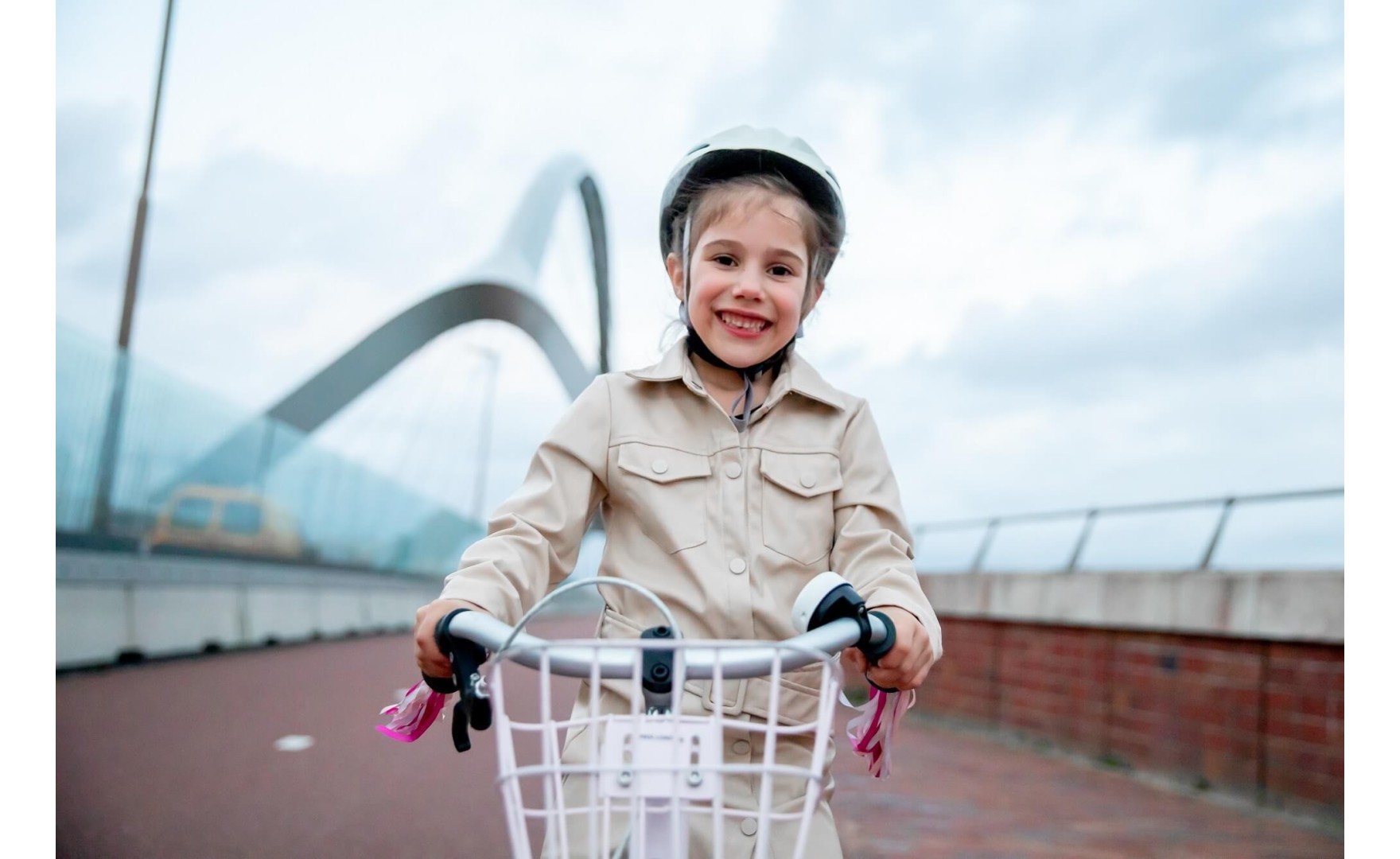How does traffic insight develop in children?

At what age can my child cycle to school alone? This is a question that is difficult to answer because of course it also depends on child characteristics. But this question did intrigue me to do more research into the development of children's traffic insight. What can you actually expect from a 6-year-old? I have put together the following article with findings.
From 0 to 4 years old
From about 3 years old, children can walk and at the same time focus their attention on other things. Up to ± 4 years, running and cycling are a problem, especially if you have to stop suddenly. Children up to about 5 years old have a very limited sense of danger.
From 5 to 8 years old
Between the ages of 5 and 10, a child develops an awareness of danger. From ± 5 years, children start cycling without training wheels; in the beginning they swing quite a bit (especially when looking back and at low speed). From about the age of 6, children know the function of a sidewalk, a zebra crossing and a traffic light (red is stop, green is safe). Until the age of 8 or 9, children cannot properly see dangers coming. Up to ± 10 years, the field of vision and the ability to see out of the corner of the eye develop. Until about age 10, children overestimate speed. As a result, they also wait for cyclists and cars that are still very far away
From 8 to 12 years old
Between the ages of 10 and 14, boys in particular underestimate speed. This allows them to cross suddenly, right in front of an oncoming car or other traffic. From ± 10 years the most basic traffic rules and signs are known. Until about 11 years old, children sometimes spontaneously run into the street. Engrossed in a game or running after a ball, they forget that the street can be dangerous. Up to ± 11 years, children have problems to focus on important matters. They can concentrate on only one thing at a time (a friend across the street gets more attention than an approaching car). Only from about 11 years old can children consciously focus their attention on the traffic. Up to ± 12 years old, children still find it difficult to oversee complex traffic situations with multiple road users coming from different directions (intersections, roundabouts, turning left).
From 12 to 16 years old
Cycling skills increase until about age 14, with the greatest improvements observed until age 10. The more children cycle, the greater their skill. Even up to the age of 16, complex traffic situations regularly cause problems for children. All children (including high school students) have major problems with the general rules of priority (drivers from the right have priority, straight ahead on the same road has priority, etc.). The younger the child, the greater these problems. Up to ± 16 years the speed of information processing increases. So children need more time than adults to make decisions
The realization that your child has to go through traffic might make you extra motivated to make traffic a little safer. Near you, around school or in general. As a parent you can certainly contribute to greater road safety.
What can you do as a parent to increase traffic visibility? We have some tips for you:
- Practice together with your child
- Help your child move safely through traffic. By explaining traffic situations, playing traffic games and learning and practicing together. Make miles together. Walking and cycling. In this way your child learns how to deal with traffic and how to act safely. Ultimately, this is the only real way to increase your child's safety in traffic. And if you do this in a fun way, it can become a beautiful memory for life.
- Become a traffic parent and member of VVN
- If your child's school is not yet registered with Safe Traffic Netherlands, the school can register to make the school environment safer together with safe traffic. As a traffic parent, you contribute to road safety around the school. For example, you organize practical traffic activities for the students or think about safe school-home routes. Together with other parents you make the area around the school safer or you help the teacher with traffic activities.
- Provide a safe neighborhood. Everyone knows such a situation in the neighborhood that everyone knew for years was life-threatening. And yet, often something terrible has to happen before something is done about it. You can be that good citizen who does something about it. Often the municipality is not aware of it or what they know is not valued. Fortunately, we live in a democracy and the municipality will take it seriously if they know that the majority of their inhabitants share the same opinion. For example, a signature action could suffice here.
Resources
- CROW publication 153: Handbook design for children, Ede, Nov 2000
- Streets for children, Children Priority Foundation, Amsterdam, June 1997
- Children on the way, Children Priority Foundation, Amsterdam 1997

Comments
No comment at this time!
Leave your comment